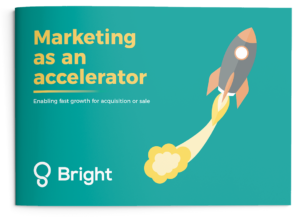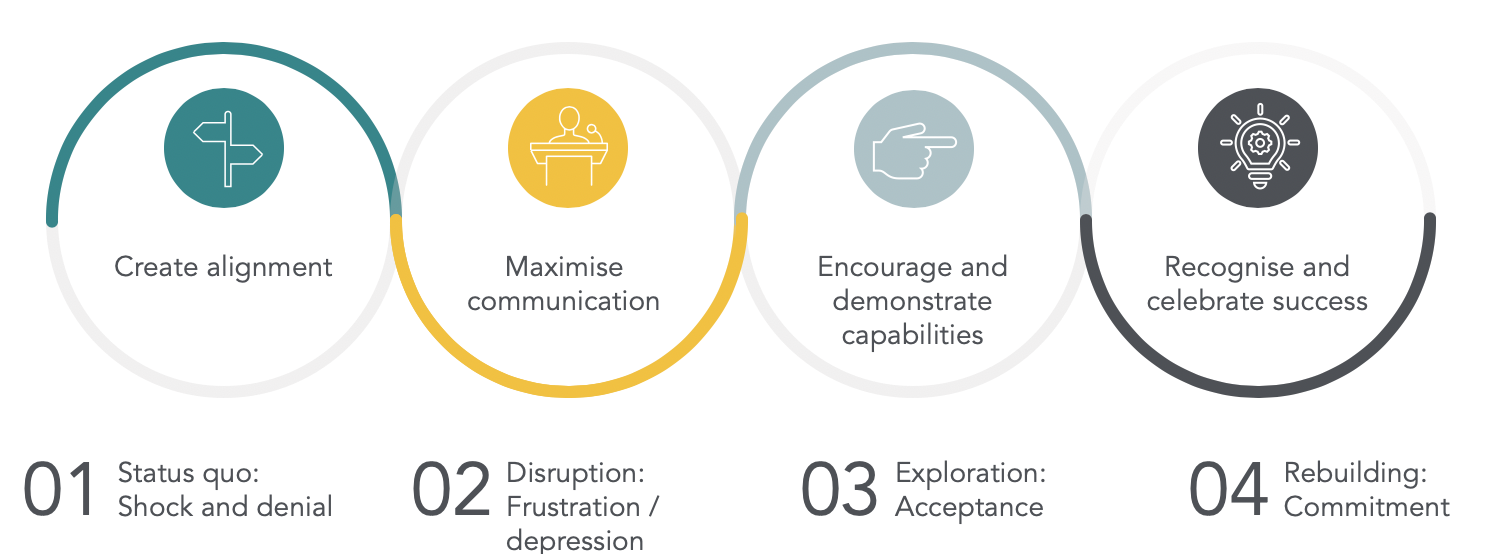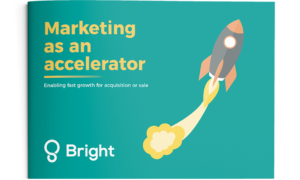To compete in today’s markets, businesses need to be more adaptable than ever. Becoming a fast-growing business is the result of a range of factors, of which marketing plays a significant part.
(Check out our Marketing as an Accelerator eBook to find out exactly how significant marketing is for growth.)
But, is it better to have an in-house marketing team or outsource to a marketing consultancy or agency?
1. Marketing experts Vs subject matter experts
In this instance, we would consider those in an agency or consultancy to be holistic marketing experts, with internal employees more likely to be subject-matter experts, specific to their businesses.
Working on a variety of projects and executing marketing plans for a whole host of clients is what marketing agencies do best. The experience gained from working in such an environment is invaluable.
Agencies and consultancies will naturally have a broader understanding of the market from exposure to other industry partners. This visibility can help shape and build strategies that make a client stand out from their competitors.
Having access to a wide network also provides agencies with flexible skills and a fresh perspective, whereas in-house teams often have funneled knowledge.
Arguably, internal employees are subject matter experts, establishing a deep-rooted understanding of the business as a whole. This in-depth knowledge can make for better business understanding and learning, but it has its limitations.
2. More creativity, better results?
In-house, a team will be focused on complying to core business strategies and delivering results. However, this internal focus can often cause teams to become shielded from external macro factors.
Through hiring an outsourced marketing team, it is possible to gain fresh perspectives, which can lead to invaluable insights into the latest trends within your industry. Agencies and consultancies can provide a level of creativity that you simply may not be able to achieve internally – they can be your ‘creative thinking hat’.
Results drive business growth. It is important to ensure that your agency understands your business strategy in order to align marketing plans. When this is done well, an outsourced partner can become an extended part of your team – which drives results!
3. Time is money
In most cases, having an internal marketing team means your approval process will be better streamlined. Fewer emails and more face to face conversations allows for greater visibility and reduced lead times.
On the other hand, by outsourcing to a marketing agency or consultancy, a business is able to free up internal resources to focus on other business tasks. An agency allows you to sit back and focus on other business-critical activity, enabling your existing staff to become more efficient.
Some may argue it is more cost efficient to have an internal marketing team as there aren’t any rush or overtime charges. But, it has been found that agencies provide an average 9% monetary saving and a 15% average time saving precisely for those reasons. When there is a financial penalty for delays, you’re much more likely to move the project along rush faster than when you have all the time in the world.
4. Give your business space to grow
Growth, specifically fast growth, is a key strategic approach for many businesses to maintain competitive advantage in their industry. Why do some businesses grow quicker than others? Marketing.
Marketing is important for getting to those clients you don’t know.
The focus should also be on developing networks and building relationships with external stakeholders. Marketing consultancies have a large network extending to functions that may not be available in an in-house marketing team. They can provide stronger relationships with fewer suppliers.
The real result and key importance of using a marketing agency is freeing up your time to grow internally and externally.
So, what’s better, an in-house or outsourced marketing set-up?
The merits of in house are employees are subject matter experts, fully aligned to their business strategy. Not only this, but activity can be turned around quickly because teams will be working closely and managed by one senior management team. On the flip side, if you’re looking for an agile team, experts within marketing with a full resource behind them including content, creative services, strategy, lead generation and more, then a marketing consultancy is the way to go.
In reality, the sweet spot is somewhere between the two, and that’s what the Bright’s agile marketing hub model achieves.
Agile marketing hub – bringing together the benefits of both internal and external experts
Bright is a strategic marketing consultancy we’re different to an agency as we focus on using agile ways of working to rapidly drive results by understanding your business, aligning to your goals and making sure marketing is working towards achieving them, at pace. We use our Agile marketing hub model to support high growth and dynamic businesses. This provides clients with a cross functional team combining in-house, Bright’s agile marketing strategy experts and supporting resources – such as creative services, content, data and lead generation– as and when required.
We shape and execute marketing strategies designed to optimise and plug in-house gaps and support business goals. We also focus on driving as much business value as possible for our clients by setting clear KPI that align our projects and campaigns with business goals.
Using our agile marketing we experiment and fine tune each and every go-to-market message, tactic and martech use and execution process to get the best results possible for you.
Read more about how marketing is key to high growth and exit strategies in Bright’s new eBook: “Marketing as an Accelerator” – including commentary from business leaders and investors.











